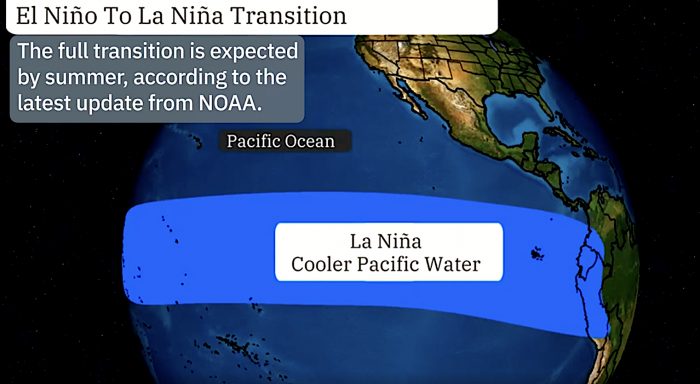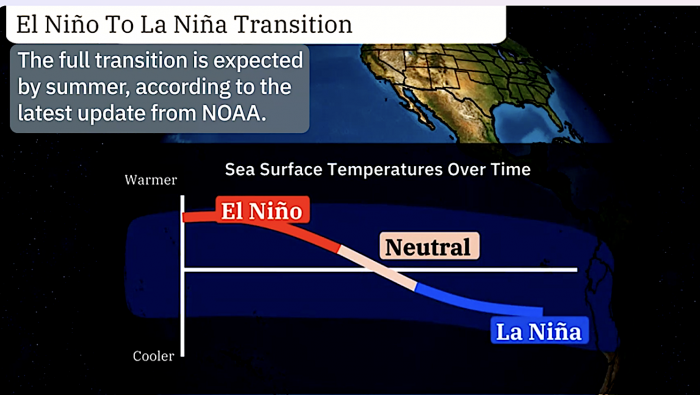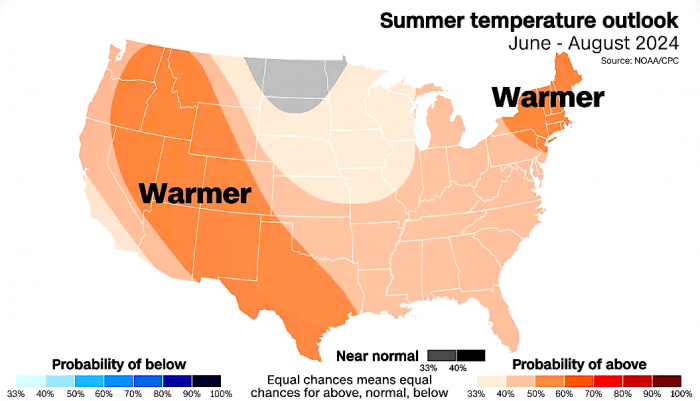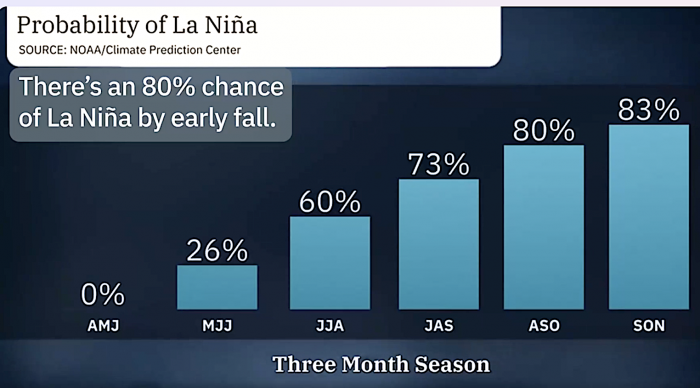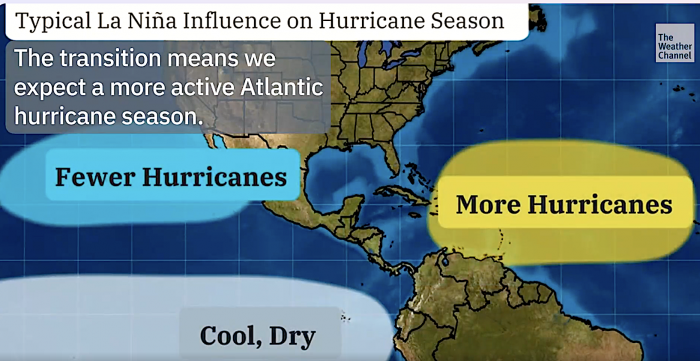La Niña and 2024
La Niña – What Is It?
La Niña is a climate phenomenon characterized by cooler-than-average sea surface temperatures in the central and eastern tropical Pacific Ocean. The colder water upwells in the western Pacific and It often leads to significant changes in global weather patterns. Here’s what we can expect for Sedona and Northern Arizona:
1. Drier Conditions in Arizona
La Niña typically brings drier conditions to the southern half of the United States. Unfortunately, this means that drought conditions may worsen.
As the shift from El Niño to La Niña is starting to take place, the Cottages At Coffeepot just experienced the highest rain total since I have been recording the precipitation since 2010. There were almost 10 inches of rain in April. The closest month to that total was in December of 2016 at 7.22 inches of rain.
However, there’s an exception for Arizona, which may experience an active monsoon season. Time will tell. Because the monsoon will not arrive until July, May and June will give us a sense of how La Niña will develop. These months are usually dry but our southern neighboring states may give us a better picture.
2. Potential Impact on the Atlantic Hurricane Season
The chart above shows the possibility of the development cycle of the Climatic shift. La Niña’s arrival could coincide with the peak of the Atlantic hurricane season. If La Niña develops quickly over the summer, we might experience an active tropical season. However, if it takes longer to develop, the tropics may not be as active during the 2024 hurricane season 2. Sedona is can be affected by hurricanes off of Mexico, Fewer Pacific hurricanes can mean less monsoon activity for southern Arizona and Sedona, so understanding their (hurricane) potential impact on the region is essential for preparedness.
3. Winter Weather Implications
La Niña also influences winter weather. Although we’re discussing summer and fall, it’s worth noting that La Niña’s effects can extend into the following winter. If La Niña persists, we might expect:
- Dry and Mild Winter in the South: Southern Arizona could experience a milder winter with less precipitation.
- Colder Winter in the Northeast: Northern Arizona, including Sedona, might see cooler temperatures.
- Frequent Storms in the Northwest: The Pacific Northwest could face more storms.
In Conclusion
El Niño and La Niña are part of a climatic cycle change that affects the Pacific Ocean. The affects of this cycle can be felt in many parts of the world. In Sedona, the Cottages At Coffeepot, and Arizona in general, El Niño creates a change in the Jet Stream that brings more moisture to our state and the southern half of the States. During the winter months, drier air is kept more to the northern part of the country while we get more precipitation.
El Niño is weakening and our area is entering a period of La Niña. During La Niña the air is drier in Arizona. However, it will be interesting to see the affects of monsoon in July. A more active monsoon may minimize the La Niña during the summer months.
As of right now, there is no way to forecast the strength of La Niña. In the coming months, a better picture will materialize to help forecast the coming weather patterns. Stay tuned!
The video below helps put this in perspective.
El Niño and La Niña Explained
See Also
Monsoon! ~ What is it? ~ How Does It Affect Sedona and Arizona?
Find link for article here

